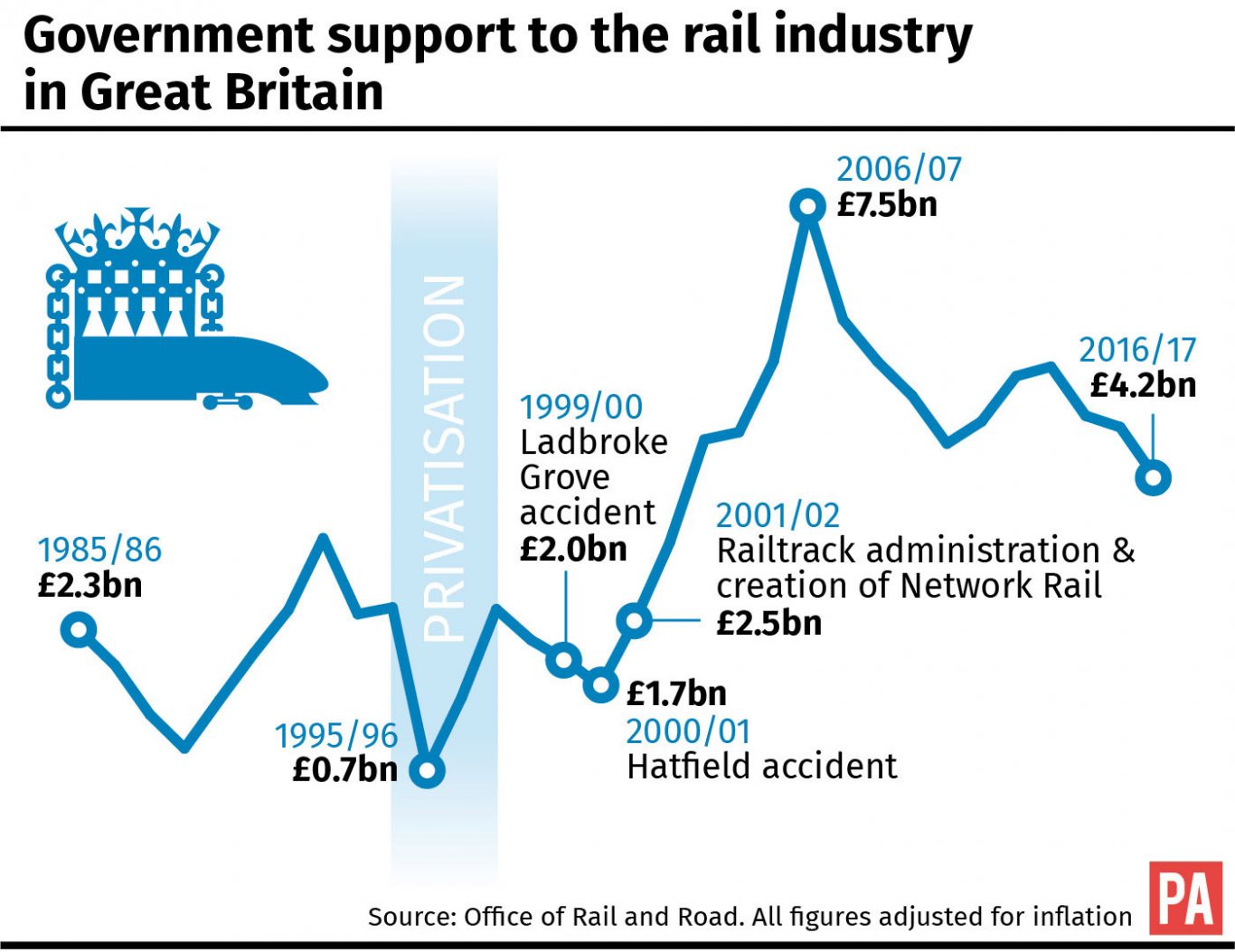Government spending on rail network falls to 15-year low of £4.2bn
The decrease was mostly due to the end of funding for Crossrail, London’s new east-to-west line.

The amount spent on Britain’s railways by the Government has fallen to its lowest level for nearly 15 years, new figures show.
Some £4.2 billion of government support went to the rail industry in 2016/17 to help with the operation, maintenance and upgrading of the network.
This was a drop of almost 13% on the previous year, once inflation is taken into account.

The decrease was mostly due to the end of funding for Crossrail, London’s new east-to-west line.
The figures, from the Office of Rail and Road, show that government support for Britain’s rail network peaked in 2006/07 (£7.5 billion), since when it has dropped in real terms by 44%.
Total spending in 2016/17 was the lowest since 2002/03 (£3.4 billion).
The majority of government support was in the form of a grant to Network Rail (£4.1 billion), which was used to maintain and improve the network. This amount was up slightly (£32 million) on the previous year. Funding also rose for new high-speed line HS2. This went up from £472 million in 2015/16 to £839 million in 2016/17.
A Department for Transport spokesman said: “We are delivering the biggest investment in the rail network for more than 100 years and the figures show that this investment, combined with an effective franchising model, is creating a network fit for the 21st century and one which, over the last year, has returned revenues to the taxpayer of around £763 million.
“We are clear that passengers should be at the heart of everything the rail industry does, and that is why we are committed to delivering faster services, more seats, and more frequent trains in combination with the newest technology.”
In 1996/97, the last financial year before the rail network was fully privatised, government spending totalled £1.5 billion (in today’s prices).
Spending has not fallen below this level in any of the subsequent 20 years of privatisation.
Comparable figures on rail funding date back to 1985/86.
They show that during the last years of British Rail – when the railways were in public ownership – government spending averaged around £2 billion a year (from 1985/86 to 1993/94).
A spokesman for the Rail Delivery Group (RDG), which brings together train companies and Network Rail to enable a better railway, said: “Since privatisation, demand for rail travel has doubled so money from the public and private sectors, working together, is building the bigger, better railway passengers and the country need.
“At privatisation, the railway ran at a £2 billion a year day-to-day loss, whereas it now generates an operating surplus for government of £200 million.”
The RDG also highlighted that private investment in rail – £925 million in 2016/17 – is at record levels.





